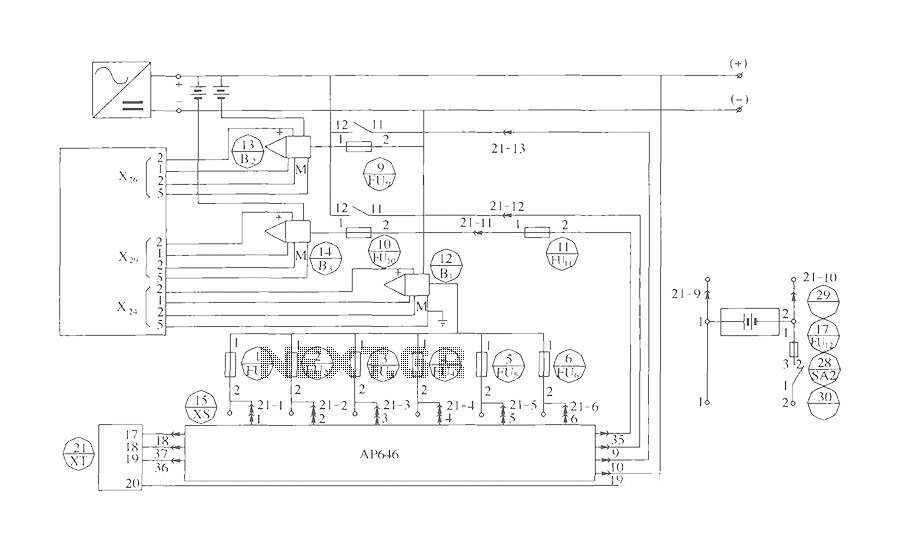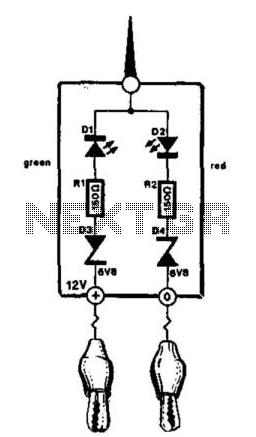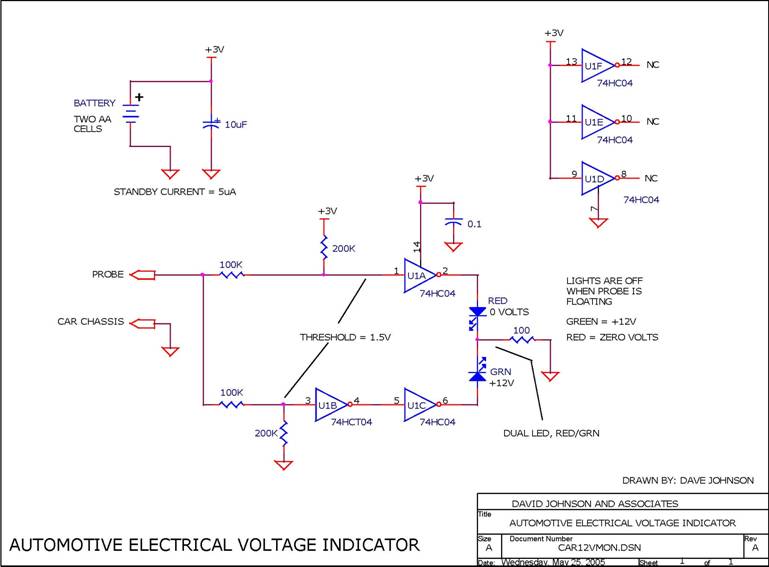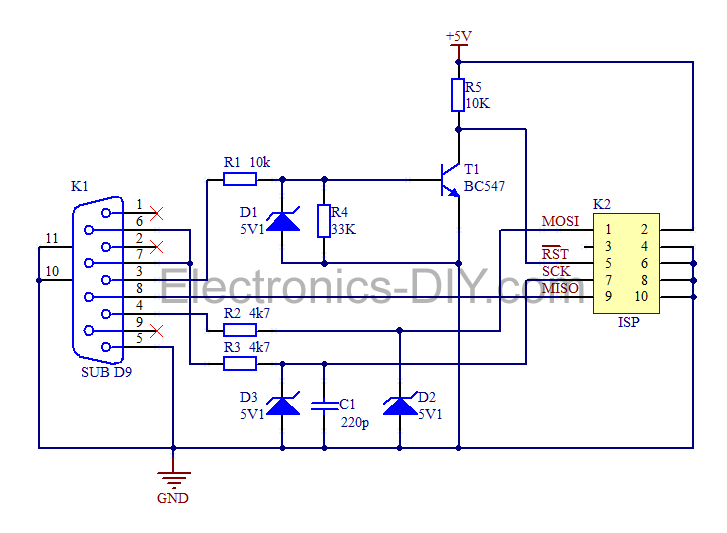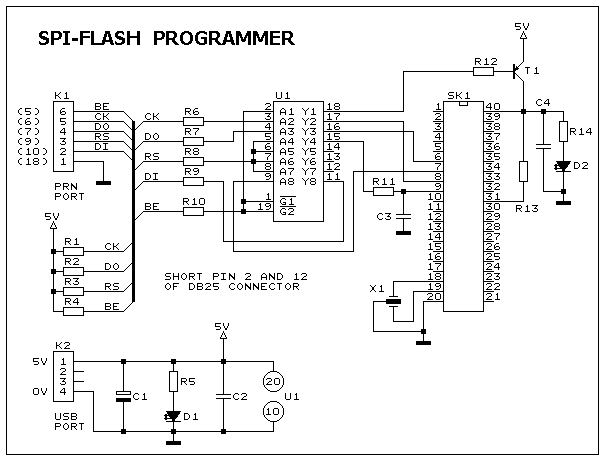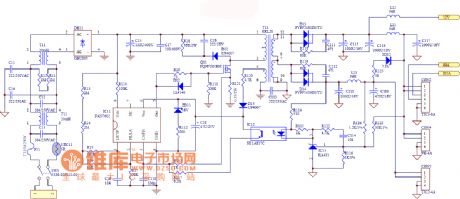
ELECTRICAL ENGINEERING TECHNOLOGY PROGRAM
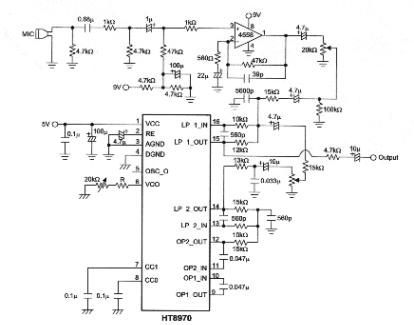
The objective of this project is to develop a multi-effect guitar processor capable of altering the tonal characteristics of a guitar. This device aims to provide a wide range of unique sounds, enhancing the entertainment value for users. The evolution of guitar processors has significantly advanced, allowing modern devices to replicate the sounds of specific amplifiers. This technology enables guitarists to achieve the same tones that would typically require multiple amplifiers. Additionally, guitar synthesizers can mimic the tonal qualities of various instruments, offering limitless possibilities in sound design. Although various existing systems could serve as design references, this project intends to innovate rather than replicate. The focus is on recreating effects through electronic means, incorporating original designs. Key components include a distortion stage and a tremolo effect, utilizing specialized integrated circuits (ICs) to achieve high quality at a low cost.
The initial stage involves a compressor and input level control, which provides audio compression and boosts the signal, preparing it for subsequent processing stages. The distortion stage generates tones that range from clean to heavily distorted, serving as the primary effect upon which all other effects depend. The circuit receives input from the guitar's pickup, with an inverting operational amplifier (mA741) controlled by a ±12-volt source. The gain is adjustable (10.01 to 0.01) to accommodate various input amplitudes, with a potentiometer labeled "input level" located on the unit's front panel. The output from this stage is connected to the compressor (SSM2165-2P) to address amplitude variations observed in the output of the guitar's pickup, particularly between low and high strings. The compressor minimizes amplitude fluctuations by boosting weaker signals and attenuating stronger ones, functioning as an amplifier with automatic gain control (AGC). The threshold setting determines the impact of the input signal on gain, although care must be taken to manage noise, as higher thresholds can lead to increased background noise.
The design of the multi-effect guitar processor involves several stages, each contributing to the overall functionality and sound quality. Following the compressor, the signal will pass through the distortion circuit, where the desired tonal characteristics are shaped. The distortion stage may utilize various techniques, such as clipping or wave shaping, to create a range of tones from subtle overdrive to extreme distortion. Furthermore, additional effects such as modulation, reverb, and delay can be integrated into the processor, each requiring careful design consideration to ensure compatibility with the primary signal path.
The use of specialized ICs can enhance the performance and efficiency of the circuit, allowing for compact design while maintaining high fidelity. The overall architecture should be modular, enabling easy upgrades or modifications to specific effects as new technologies emerge. Power supply design is also critical, with attention given to filtering and regulation to minimize noise and ensure consistent performance across all effects.
In conclusion, the multi-effect guitar processor represents a significant advancement in the realm of electronic guitar effects, combining innovative design with practical functionality to deliver a versatile tool for musicians seeking to explore new sonic territories.The goal of this project was to create a multi-effect guitar processor. This device will be capable of changing the tonal qualities of the guitar. Through these changes in tone it is possible to give the guitar a very wide array of unique sounds. This project was chosen due to David`s interest in this field. The project is mainly designed for ente rtainment purposes. Which means that once it was built and functional, the device is very enjoyable to use. Guitar processors have been around since the dawn of the electric guitar. The capabilities of these devices have greatly advanced through the years. These advancements have led to processors today that can model the exact sounds of a specific amplifier. Through the use of this technology a guitar player could use a single processor and be able to create the same sounds that a room full of different amplifiers could create.
There are also guitar synthesizers available that can make the electric guitar have the same tonal qualities of many other instruments. The possibilities in this field are endless, and with each new effect it gives the guitar a totally new identity.
There are several systems in use today upon which the design could be based. However the goal of this project is not to base it upon previous designs. For this project the desired result is already known. The problem was to recreate these effects through the use of electronics. This project will include some original designs. Through the use of some of the concepts covered in the EET program the distortion stage and the tremolo effect were created. The project will also use several special IC`s that will perform the desired function. The key is to keep costs low and the quality high. Compressor and Input Level: This stage will provide audio compression and allow for signal boosting. These functions will prepare the signal for the following stages. Distortion: This stage will create a distorted tone, which can range from clean to heavily distorted.
All of the following effects are based off of this signal therefore this stage can be called the primary effect. In order to prepare the signal for processing it is necessary to have control over the amplitude of the signal.
The input to this circuit is the output of the guitar`s pickup (the unmodified guitar signal). The input level circuit is shown on the left it is controlled by an inverting op-amp (mA741). The op-amp is driven by a ±12-volt source. The gain range (10. 01 0. 01) is variable so that the device will work for various amplitude inputs. The gain potentiometer is mounted on the face of the unit and labeled input level. The output on pin six is then fed to the input of the compressor (SSM2165-2P) on pin four. Through experimentation it was noted that the output of the guitar`s pickup was greater on the low (pitch) strings than it was on the higher (pitch) strings. Also the operations of some of the following stages are dependent upon the amplitude of the input signal.
In order to deal with these issues an audio compressor was used. A compressor is used to reduce variation in the amplitude of an input signal. In general all of the weak signals get boosted and all of the strong signals get attenuated. Electronically a compressor is nothing more than an amplifier with automatic gain control (AGC). Automatic gain control is where the amplitude of the input signal controls the gain of an amplifier. The threshold (compression ratio) controls how much of an impact the input signal has on the gain. One problem with compression is noise, due to the fact the higher the threshold the higher the noise. If the threshold was set so that the compressor was highly responsive, and an input signal was decaying, the gain would continue to increase (in an attempt to hold the same amplitude) but at the same time the relative amount of noise on the input is becoming greater than the signal, hence now there is more noi
🔗 External reference
The initial stage involves a compressor and input level control, which provides audio compression and boosts the signal, preparing it for subsequent processing stages. The distortion stage generates tones that range from clean to heavily distorted, serving as the primary effect upon which all other effects depend. The circuit receives input from the guitar's pickup, with an inverting operational amplifier (mA741) controlled by a ±12-volt source. The gain is adjustable (10.01 to 0.01) to accommodate various input amplitudes, with a potentiometer labeled "input level" located on the unit's front panel. The output from this stage is connected to the compressor (SSM2165-2P) to address amplitude variations observed in the output of the guitar's pickup, particularly between low and high strings. The compressor minimizes amplitude fluctuations by boosting weaker signals and attenuating stronger ones, functioning as an amplifier with automatic gain control (AGC). The threshold setting determines the impact of the input signal on gain, although care must be taken to manage noise, as higher thresholds can lead to increased background noise.
The design of the multi-effect guitar processor involves several stages, each contributing to the overall functionality and sound quality. Following the compressor, the signal will pass through the distortion circuit, where the desired tonal characteristics are shaped. The distortion stage may utilize various techniques, such as clipping or wave shaping, to create a range of tones from subtle overdrive to extreme distortion. Furthermore, additional effects such as modulation, reverb, and delay can be integrated into the processor, each requiring careful design consideration to ensure compatibility with the primary signal path.
The use of specialized ICs can enhance the performance and efficiency of the circuit, allowing for compact design while maintaining high fidelity. The overall architecture should be modular, enabling easy upgrades or modifications to specific effects as new technologies emerge. Power supply design is also critical, with attention given to filtering and regulation to minimize noise and ensure consistent performance across all effects.
In conclusion, the multi-effect guitar processor represents a significant advancement in the realm of electronic guitar effects, combining innovative design with practical functionality to deliver a versatile tool for musicians seeking to explore new sonic territories.The goal of this project was to create a multi-effect guitar processor. This device will be capable of changing the tonal qualities of the guitar. Through these changes in tone it is possible to give the guitar a very wide array of unique sounds. This project was chosen due to David`s interest in this field. The project is mainly designed for ente rtainment purposes. Which means that once it was built and functional, the device is very enjoyable to use. Guitar processors have been around since the dawn of the electric guitar. The capabilities of these devices have greatly advanced through the years. These advancements have led to processors today that can model the exact sounds of a specific amplifier. Through the use of this technology a guitar player could use a single processor and be able to create the same sounds that a room full of different amplifiers could create.
There are also guitar synthesizers available that can make the electric guitar have the same tonal qualities of many other instruments. The possibilities in this field are endless, and with each new effect it gives the guitar a totally new identity.
There are several systems in use today upon which the design could be based. However the goal of this project is not to base it upon previous designs. For this project the desired result is already known. The problem was to recreate these effects through the use of electronics. This project will include some original designs. Through the use of some of the concepts covered in the EET program the distortion stage and the tremolo effect were created. The project will also use several special IC`s that will perform the desired function. The key is to keep costs low and the quality high. Compressor and Input Level: This stage will provide audio compression and allow for signal boosting. These functions will prepare the signal for the following stages. Distortion: This stage will create a distorted tone, which can range from clean to heavily distorted.
All of the following effects are based off of this signal therefore this stage can be called the primary effect. In order to prepare the signal for processing it is necessary to have control over the amplitude of the signal.
The input to this circuit is the output of the guitar`s pickup (the unmodified guitar signal). The input level circuit is shown on the left it is controlled by an inverting op-amp (mA741). The op-amp is driven by a ±12-volt source. The gain range (10. 01 0. 01) is variable so that the device will work for various amplitude inputs. The gain potentiometer is mounted on the face of the unit and labeled input level. The output on pin six is then fed to the input of the compressor (SSM2165-2P) on pin four. Through experimentation it was noted that the output of the guitar`s pickup was greater on the low (pitch) strings than it was on the higher (pitch) strings. Also the operations of some of the following stages are dependent upon the amplitude of the input signal.
In order to deal with these issues an audio compressor was used. A compressor is used to reduce variation in the amplitude of an input signal. In general all of the weak signals get boosted and all of the strong signals get attenuated. Electronically a compressor is nothing more than an amplifier with automatic gain control (AGC). Automatic gain control is where the amplitude of the input signal controls the gain of an amplifier. The threshold (compression ratio) controls how much of an impact the input signal has on the gain. One problem with compression is noise, due to the fact the higher the threshold the higher the noise. If the threshold was set so that the compressor was highly responsive, and an input signal was decaying, the gain would continue to increase (in an attempt to hold the same amplitude) but at the same time the relative amount of noise on the input is becoming greater than the signal, hence now there is more noi
🔗 External reference
